Processing and Characterization of Metal Containing Wastes
A special issue of Metals (ISSN 2075-4701). This special issue belongs to the section "Extractive Metallurgy".
Deadline for manuscript submissions: closed (31 March 2022) | Viewed by 32206
Special Issue Editor
Interests: wastes; extraction metallurgy; recycling
Special Issues, Collections and Topics in MDPI journals
Special Issue Information
Dear Colleagues,
The metallurgical industry produces a high amount of wastes, most of which are rich in metals, in metallic form or in compounds. Whether in the extractive metallurgy phase or in the metal processing steps, the wastes generated may contain valuable metal elements. Other industrial activities also generate waste rich in metals. Such is the case, for example, of the residues generated in the surface treatment of materials, in the electrical and electronic industry, in the automotive industry, in the mining industry, and in chemistry, among many others. Moreover, at the end of life of products, metal scraps are often found, sometimes of simple composition, other times complex, requiring specific separation techniques.
Given the intrinsic value associated with metals and, in some cases, due to being considered critical materials because of their scarcity in nature and growing needs in specific applications, most metals contained in the wastes must be recovered, either through recycling processes or through more complex processes in which metals can be obtained in useful forms. On the other hand, it is common for wastes containing metals to present environmental hazards, necessitating treatments that are in compliance with the environmental protection principles, sometimes not aiming the recovery of metals but just the obtainment of less hazardous or inert products.
This Special Issue aims to address research on processes of metal recovery from wastes containing metals. Recycling processes, the use of physical and mechanical technologies, and chemical processes involving low or high temperatures are all of interest. Presentation of research on the inertization of hazardous wastes or similar processes is encouraged as well. This Issue also intends to include the presentation of studies on the characterization of wastes containing metals, not only to support the development of extraction, recycling, or inertization processes but also to further environmental and hazard assessments.
Prof. Dr. Fernando Castro
Guest Editor
Manuscript Submission Information
Manuscripts should be submitted online at www.mdpi.com by registering and logging in to this website. Once you are registered, click here to go to the submission form. Manuscripts can be submitted until the deadline. All submissions that pass pre-check are peer-reviewed. Accepted papers will be published continuously in the journal (as soon as accepted) and will be listed together on the special issue website. Research articles, review articles as well as short communications are invited. For planned papers, a title and short abstract (about 100 words) can be sent to the Editorial Office for announcement on this website.
Submitted manuscripts should not have been published previously, nor be under consideration for publication elsewhere (except conference proceedings papers). All manuscripts are thoroughly refereed through a single-blind peer-review process. A guide for authors and other relevant information for submission of manuscripts is available on the Instructions for Authors page. Metals is an international peer-reviewed open access monthly journal published by MDPI.
Please visit the Instructions for Authors page before submitting a manuscript. The Article Processing Charge (APC) for publication in this open access journal is 2600 CHF (Swiss Francs). Submitted papers should be well formatted and use good English. Authors may use MDPI's English editing service prior to publication or during author revisions.
Keywords
- waste management
- waste characterization
- metal recycling
- metal extraction processes
- environmental assessment of wastes
- critical and strategic metals
- hydrometallurgy
- pyrometallurgy
- separation and sorting processes





